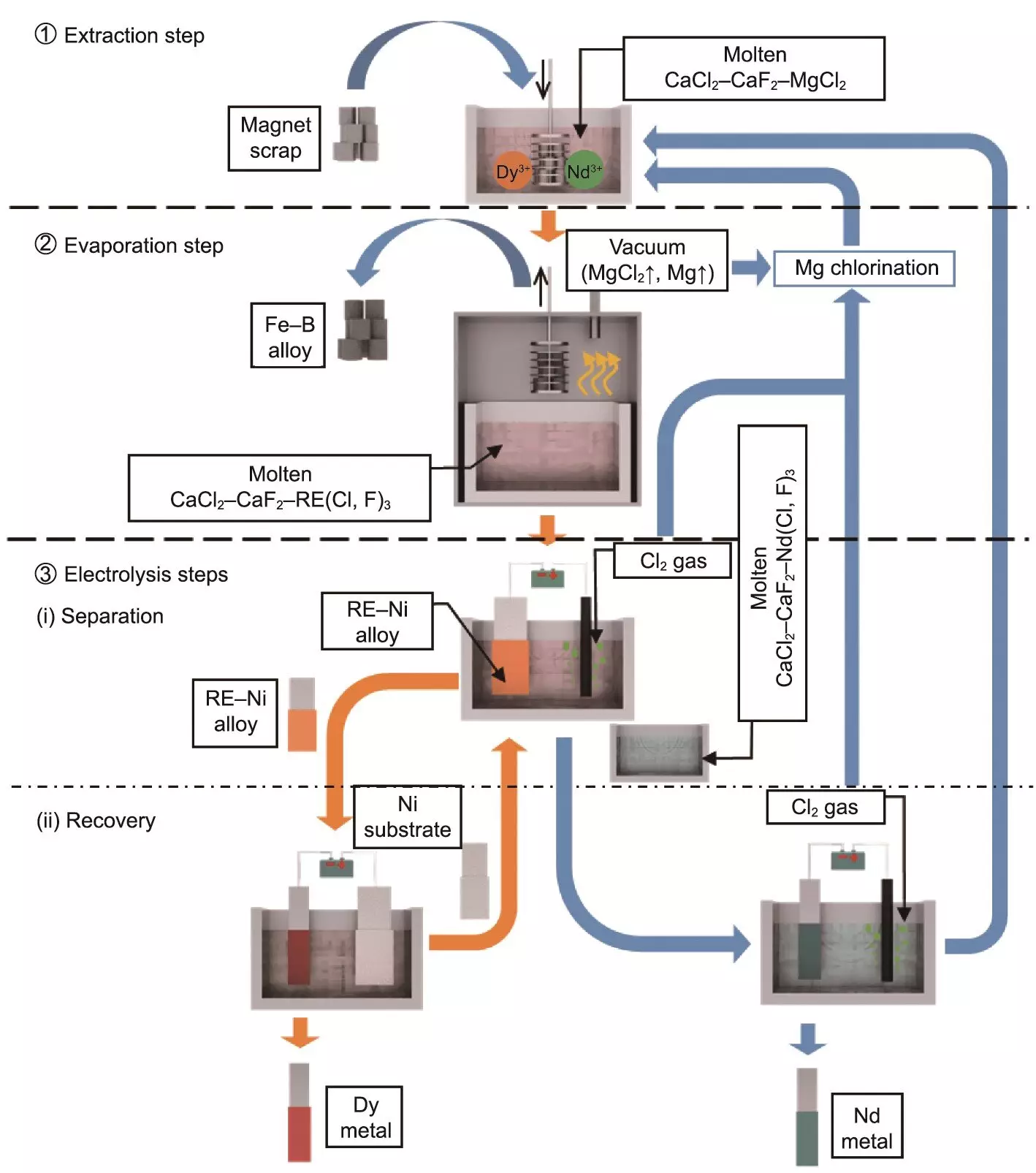Rare-earth elements (REEs) are indispensable in the production of advanced technologies, particularly in the realm of green energy solutions such as electric vehicles and wind turbines. As the demand for these technologies surges globally, the need for efficient extraction and recycling of REEs, notably neodymium (Nd) and dysprosium (Dy), has become increasingly urgent. Traditional recycling methods have often proved to be energy-intensive and harmful to the environment, leading researchers worldwide to seek innovative alternatives that not only enhance efficiency but also lessen ecological impact.
Recent research led by a team from Kyoto University, particularly under the guidance of Professor Toshiyuki Nohira, has introduced a groundbreaking method that facilitates the effective recovery and recycling of REEs from obsolete magnets. This method, referred to as the selective extraction–evaporation–electrolysis (SEEE) process, represents a significant leap forward in recycling technology. It comprises three stages: selective extraction, selective evaporation, and selective electrolysis. Each of these phases is designed to maximize recovery while minimizing environmental strain.
In the first stage, selective extraction, a specially formulated molten salt mixture containing calcium chloride and magnesium chloride is utilized to draw out REEs from discarded magnets. The incorporation of calcium fluoride is a notable advancement, as it aids in controlling evaporation losses, thereby enhancing the efficiency of this stage.
The second stage, selective evaporation, focuses on removing residual extraction agents and byproducts. This concentrates the valuable REEs, setting the stage for the final, pivotal phase. Selective electrolysis allows for the distinct separation of the REEs based on their differing formation potentials, leading to the recovery of Nd and Dy in exceptionally high purities. Remarkably, the SEEE process boasts impressive recovery rates, achieving 96% for neodymium and 91% for dysprosium, with purities surpassing 90%. Such results are a testament to the process’s efficiency compared to existing traditional recycling technologies, which are often criticized for their inefficiency and extensive environmental fallout.
As the global economy leans more towards sustainable practices, the implications of the SEEE process extend well beyond just recycling Nd magnets. The urgent demand for electric vehicles and renewable energy necessitates a reliable supply of REEs, making the SEEE process not just a technological innovation but a potential solution to a looming global concern. By reducing reliance on mining operations, which are fraught with environmental challenges, this process aligns closely with the global movement toward minimal ecological footprints and responsible resource management.
Moreover, the versatility of the SEEE method suggests its applicability to diverse fields beyond those initially studied. The researchers express optimism about adapting this technique for the reprocessing of nuclear fuels, broadening its impact across various industries.
Despite the promising results showcased by the SEEE process, researchers acknowledge that more comprehensive studies are needed to translate this technology from the laboratory setting to industrial applications. Yet, the findings highlight an essential stride in addressing the critical issues surrounding the recycling of rare-earth elements.
The ongoing need for advanced recycling solutions cannot be overstated, especially as we transition to more sustainable energy systems. Innovations such as the SEEE process are integral to overcoming familiar obstacles posed by traditional REE recycling methods. As the world faces the challenge of carbon neutrality, it is imperative that such innovations be prioritized, ensuring a balance between technological advancement and environmental preservation. The future of REE recycling looks promising, and with continuous research and development, it holds the promise of aligning industrial practices with broader environmental goals.

